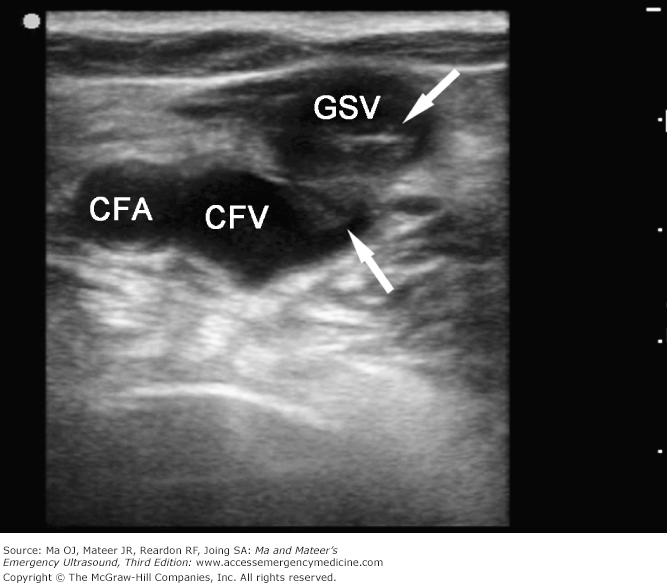Telemedicine and virtual care have quickly emerged as essential equipment in being concerned in your patients while keeping yourself and your personnel secure as the COVID-19 pandemic quickly evolves. Here is what you need to recognize while providing telehealth services.
How to get reimbursed?
The Centers for Medicare & Medicaid Services (CMS) has loosened the policies for telemedicine in response to the COVID-19 pandemic. Telehealth services may additionally now be brought to Medicare beneficiaries with the aid of the phone so long as video functionality is to be had.
Review the links below for more information and read more on the FPM Journal Getting Paid blog.
- Read the CMS fact sheet to understand how Medicare will cover and reimburse virtual services.
- Review the CMS FAQsto get answers to your questions about telehealth coverage and reimbursement.
- Get guidance on Medicaid coverage for telehealth services.
- Need help with telehealth coding? Access this guide to give you at-a-glance coding information for telehealth visits.
Technology:
Providing care truly shouldn’t be complex!
Beginning on March 6, 2020, Medicare — administered by the Centers for Medicare & Medicaid Services (CMS) — will briefly pay clinicians to offer telehealth services for beneficiaries dwelling throughout the complete country.
It’s as simple as the use of your cellphone, cellphone or computer with a shared hyperlink to enable video, or other digital gadgets. Free to low-fee telehealth platform alternatives are available. As of the March 17 HHS OCR declaration, powerful at once (and during the COVID-19 National Public Health Emergency) you may use popular apps that allow for video chats, inclusive of Apple FaceTime, Facebook Messenger video chat, Google Hangouts video, and Skype, to offer telehealth with out risk that OCR may impose consequences for noncompliance with HIPAA.
Note: Facebook Live, Twitch, TikTok, and comparable video conversation apps which can be public going through need to no longer be used to provide care simply.
Examples of Telehealth Platforms:
AAFP does now not advise specific products or businesses and of path advocate carrying out your personal due diligence in investigating, but telehealth platforms we’re aware about contributors the use of in personal exercise consist of:
Doxy.me – Self-touted to be “a simple, free, and secure telemedicine solution.” The AAFP understanding is Doxy.me has a “freemium” business model, with a free base option and other options available at cost a la carte.
eVisit – The AAFP has heard member reports eVisit ranges from $50/month to $150/month.
SimpleVisit – The AAFP has heard SimpleVisit runs approximately $150/month.
VSee – The VSee site notes one can “get it free,” though the AAFP has heard members report it costing up to $250/month.
Mend (MendFamily) – The AAFP has heard of pricing at approximately $250/mo to $500/month, with mention that $500/month includes billable condition-specific questionnaires that can be pushed to patients and info gathered in advance of the visit.
Note: Mend is available only in certain areas; though those are not definitively known to the AAFP and continue to expand.
Spruce Health – Spruce Health is often used by direct primary care (DPC) family medicine practices. Its telehealth capabilities are integrated with Elation Health EHR, though Spruce can be used alongside other EHRs without integration with EHR. The AAFP is not yet aware of pricing info.
CMS Relaxes Regulatory Requirements:
On March 30, 2020, CMS published an interim final rule (Medicare and Medicaid Programs; Policy and Regulatory Revisions in Response to the COVID-19 Public Health Emergency) to offer extra flexibility to physicians all through the COVID-19 pandemic. The following adjustments are effective as of March 1, 2020, and during this current public fitness emergency.
- Added Medicare coverage of, and payment for, telephone evaluation and management (E/M) services (CPT 99441-99443). These services may be provided to new or established patients.
- Allows physicians to select the level of office/outpatient E/M furnished via Medicare telehealth based on medical decision making (MDM) or time.
- Time is defined as all the time associated with the E/M on the day of the encounter. The current typical times associated with office E/M are what should be met for the purposes of level selection.
- CMS is maintaining the current definition of MDM.
- CMS has removed any requirements regarding documentation of history and/or physical exam in the medical record for such visits.
- Clarifies the Office of Inspector General’s (OIG) Policy Statement to state that physicians will not be subject to sanctions for reducing or waiving cost-sharing for a broad category of non-face-to-face services, including:
- Telehealth visits
- Virtual check-in services
- E-visits
- Monthly remote care management
- Monthly remote patient monitoring
- Expands the list of services that can be provided via telehealth. The updated list can be found here.
- Provides payment for telehealth services at the non-facility rate under the Medicare physician fee schedule when appropriate
- Physicians must bill the telehealth service with the Place of Service (POS) code they would have used if the service had been provided in person. Physicians must also append modifier -95 to the claim lines that describe services delivered via telehealth.
- Any service reported with POS 02 (Telehealth) will be paid at the facility rate under the Medicare physician fee schedule.
- Allows telehealth, virtual check-ins, e-visits, and telephone E/M services to be provided to any patient — new or established.
- Clarifies that consent must be obtained annually and may be obtained either before or at the time of service.
- For Rural Health Clinics (RHC) and Federally Qualified Health Centers (FQHC) — expands the services included in Virtual Communication Services (HCPCS G0071) to include the services reflected in CPT 99421-99423.
- CMS will revise the payment amount of G0071 to the average national non-facility amount for HCPCS G2012 and G2010 and CPT 99421-99423.
- All virtual communication services billable using HCPCS code G0071 will also be available to new patients that have not been seen in the RHC or FQHC within the previous 12 months.
Cost-sharing Waiver: Medicare Part B COVID-19 Patients Backdated from March 18
The Families First Coronavirus Response Act waives fee-sharing for Medicare Part B sufferers for COVID-19 checking out-associated services, as well as for workplace visits that result in the order or administration of the COVID-19 take a look at, and the evaluation of an individual to decide the want for this type of test.
The fee-sharing waiver is powerful for dates of provider between March 18, 2020, and the quit of the general public fitness emergency.
Use the -CS Modifier
Physicians must use the -CS modifier on applicable claim strains to perceive the carrier challenge to the value-sharing waiver.
Beneficiaries ought to now not be charged for any coinsurance or deductible for the ones services. The -CS modifier will sign the precise Medicare Administrative Contractor to pay one hundred% of the allowable declare for the service.
Physicians need to contact their MACs and request to resubmit relevant claims with dates of carrier on or after March 18, 2020, that had been submitted without the -CS modifier. The -CS modifier should now not be used for services unrelated to COVID-19.
Medicare Telehealth Services:
- Are provided using telecommunication technology and include office, hospital visit, or other services that generally occur in person. CMS recently updated the list of Medicare telehealth services.
- Are considered the same as in-person visits and paid at the same rate as in-person visits.
- To receive payment at the same rate as an in-person visit, CMS is instructing physicians to bill services delivered via telehealth with the same Place of Service (POS) code they would have used if the service had been provided in-person.
- Physicians should append modifier -95 to the claim lines that describe services delivered via telehealth.
- Claims billed with the POS 02 will be paid at the facility rate under the Medicare physician fee schedule.
- Physicians can select the level of office/outpatient E/M furnished via telehealth using medical decision making or time.
- Time is defined as all the time associated with the E/M on the day of the encounter. The current typical times associated with office E/M are what should be met for the purposes of level selection. They can be found here.
- CMS is maintaining the current definition of medical decision making.
- CMS has also removed any requirements regarding documentation of history and/or physical exam in the medical record for office/outpatient E/M encounters provided via telehealth.
- Can be provided to established Medicare patients via phone if the phone allows for audio-video interaction between the physician and patient.
- The Department of Health and Human Services (HHS) has announced that it will not conduct audits to ensure a prior relationship existed for claims submitted during the COVID-19 public health emergency. Therefore, telehealth services can be provided to new and established patients.
- Can be provided in all settings, including a patient’s home. Originating site restrictions have been waived.
- The HHS Office of Inspector General (OIG) is allowing practices to waive cost-sharing for telehealth visits.
Documentation Requirements:
Documentation necessities for any form of virtual care (telehealth provider or non-telehealth virtual on line provider) are the same as those for documenting in-person care.
- If a code is time-based, evidence of time must be documented.
- CMS is allowing physicians to select the level of office/outpatient visit E/M for services delivered via telehealth using either time or medical decision making. Time is defined as all time associated with the E/M on the day of the encounter.
- The current typical times associated with office E/M are what should be met for the purposes of level selection. They can be found here.
CMS is maintaining the current definition of medical decision making. Current guidelines can be found here.
CMS has also removed any requirements regarding documentation of history and/or physical exam in the medical record for office/outpatient E/M encounters provided via telehealth.
- If exchanged asynchronously, videos, images and communications must be stored and retained according to state regulation.
- Real-time (synchronous) videos, such as during a video visit or video phone call, are not required to be stored.
Virtual Communication Services:
- FQHCs and RHCs can bill for Virtual Communication Services (HCPCS G0071). G0071 includes:
- 5 minutes or more of virtual (non-face-to-face) communication between an RHC or FQHC practitioner and RHC or FQHC patient; or
- 5 minutes or more of remote evaluation of recorded video and/or images by an RHC or FQHC practitioner, occurring in lieu of an office visit; or
- The services as described by CPT codes 99421-99423.
- Online digital evaluation and management for a patient, for up to 7 days, cumulative time during the 7 days; 5-10 minutes, 11-20 minutes, or 21 or more minutes
- The services are no longer restricted to established patients and can be provided to new and established patients.
- Consent may be obtained prior or at the time of service.
- Effective for services furnished on or after March 1, 2020, CMS will revise the payment amount for HCPCS G0071 to reflect an average of the national non-facility payment rates for G2012, G2010, and 99421-99423.
- The RHC and FQHC face-to-face requirements are waived for these services.
*The HHS Office for Civil Rights (OCR) will exercise enforcement discretion and waive penalties for Health Insurance Portability and Accountability Act (HIPAA) violations against health care providers that serve patients in good faith through everyday communication technologies, such as FaceTime or Skype, during the COVID-19 public health emergency.










